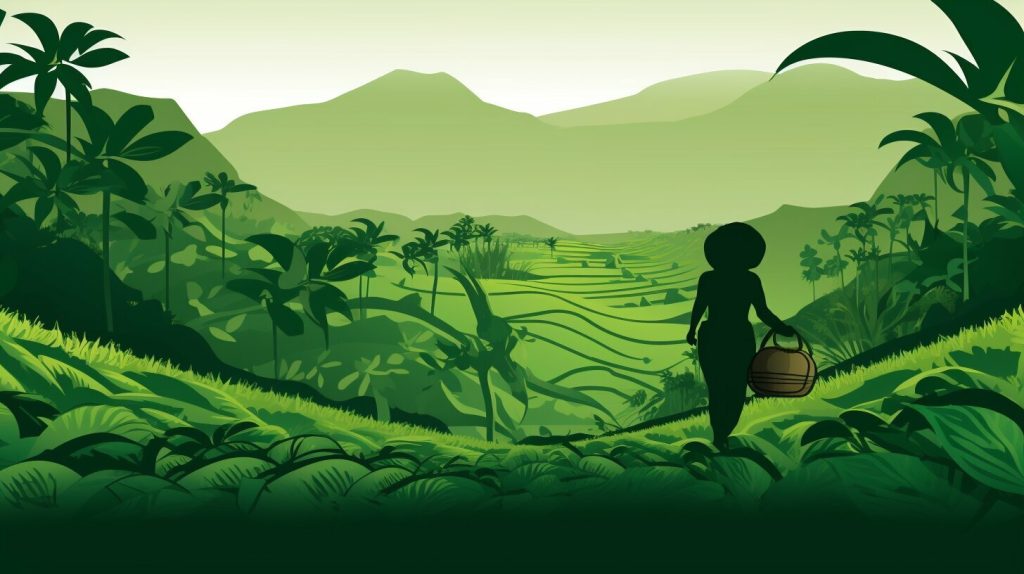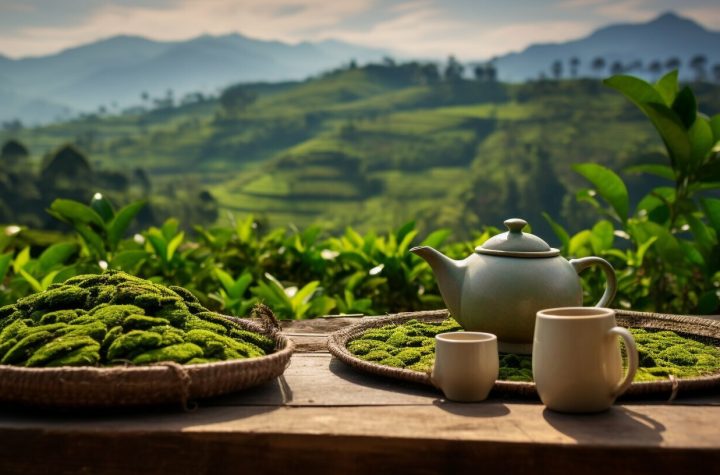
Sri Lanka is known for its rich agricultural heritage, and Arecanut is one of the key components of this tradition. Arecanut cultivation, farming, industry, and production have been a significant part of Sri Lanka’s economy, tradition, and culture for centuries. Arecanut is deeply rooted in Sri Lanka’s history and plays an essential role in sustaining the agricultural allure of the country.
The lush green hills of Sri Lanka provide perfect conditions for Arecanut cultivation, and farmers have been using traditional methods to grow it for generations. The country has become a significant producer of Arecanut, and the industry has flourished over the years, providing employment opportunities and income to farmers and traders alike.
Key Takeaways
- Arecanut has been a significant part of Sri Lanka’s agricultural heritage for centuries
- Traditional methods are used for Arecanut cultivation in Sri Lanka
- The country has become a significant producer of Arecanut
- The Arecanut industry has flourished over the years and provides employment opportunities and income to farmers and traders alike
- Arecanut plays a crucial role in preserving Sri Lanka’s agricultural allure
The History of Arecanut in Sri Lanka
Arecanut, commonly known as betel nut, has been an integral part of Sri Lanka’s agricultural heritage for centuries. It is believed that the nut originated from Malaysia and spread to other Southeast Asian countries, including Sri Lanka, through trade and migration. In Sri Lanka, Arecanut cultivation is mainly concentrated in the tropical wet and dry zones.
The cultivation and farming practices for Arecanut in Sri Lanka have been passed down through generations. The traditional method involves planting the nut in a shallow pit and covering it with soil and manure. The plant requires a high level of care and attention, including frequent watering, weeding, and fertilizing, to produce a high yield.
The Arecanut crop is usually harvested every three months. The nuts are picked when they are fully ripe, which is indicated by the nut’s yellow color. The harvested nuts are then dried in the sun or using mechanical dryers, after which they are sorted and graded based on size and quality.
The Arecanut farming industry in Sri Lanka has faced challenges over the years, including disease outbreaks and fluctuations in global demand. However, Sri Lanka remains a significant producer of Arecanut, with the nut being a staple ingredient in several local cuisines and cultural practices.
Arecanut Cultivation Techniques in Sri Lanka
Arecanut farming in Sri Lanka is a traditional practice that has been passed down through generations. Sri Lanka is renowned for its high-quality Arecanut production, which is due to the country’s favorable weather conditions and the expertise of its farmers.
The cultivation technique used in Sri Lanka involves planting Arecanut trees in hilly areas and ensuring they receive enough water and nutrients throughout their growth cycle. Farmers typically plant Arecanut in soil that is rich in organic matter such as compost or manure.
| Arecanut Cultivation Techniques | Details |
|---|---|
| Land Preparation | Farmers prepare the land by clearing the area of any unwanted vegetation. They also plow or till the soil to create a suitable seed bed, which provides sufficient space for planting Arecanut trees. |
| Selection of Planting Materials | Farmers select Arecanut seedlings that are healthy and disease-free. This ensures better growth and higher yields. |
| Planting | Arecanut seedlings are planted in the seed bed. Farmers ensure that the seedlings are planted at the right depth and distance apart to allow for their growth and development. |
| Irrigation | Arecanut trees require regular watering to ensure proper growth and development. Farmers use various methods such as drip irrigation and sprinkler irrigation to provide sufficient water to the trees. |
| Fertilization | Regular application of fertilizers ensures that the Arecanut trees receive the necessary nutrients for growth and development. |
In Sri Lanka, Arecanut suppliers play a crucial role in ensuring that farmers have access to high-quality planting materials, fertilizers, and other inputs. Reliable suppliers help farmers to optimize their cultivation practices and achieve better yields.
The traditional cultivation practices used in Arecanut farming in Sri Lanka have contributed to the industry’s success and have helped maintain the crop’s high quality. With the support of reliable suppliers, Sri Lanka’s Arecanut industry is poised to continue to thrive in the years to come.
The Arecanut Industry in Sri Lanka
The Arecanut industry is a crucial component of Sri Lanka’s agricultural sector. Arecanut production in Sri Lanka is a significant contributor to the country’s economy, providing livelihoods for many rural communities. The industry has also gained international recognition, with Sri Lanka being one of the world’s leading exporters of Arecanut.
Arecanut Production in Sri Lanka
Arecanut cultivation is prevalent in Sri Lanka, with suitable conditions for the crop available in many regions of the country. The Arecanut plant is indigenous to Sri Lanka, and its cultivation dates back to ancient times. The country’s warm and humid climate provides ideal conditions for Arecanut cultivation, and Sri Lanka’s varied topography allows for different types of Arecanut to be grown, catering to diverse consumer preferences.
The production process of Arecanut in Sri Lanka is meticulous, and farmers employ traditional methods to ensure the quality of the product. Arecanut is harvested by hand once it reaches maturity, and the nuts are then washed, sun-dried, and processed. The Arecanut industry in Sri Lanka is concentrated in the southern and western regions of the country and is a significant source of income for many farmers and their families.
Arecanut Exporters in Sri Lanka
Sri Lanka is a leading exporter of Arecanut, and the industry is a vital contributor to the country’s foreign exchange earnings. The Arecanut exported from Sri Lanka is of high quality and is in demand globally. The country’s exporters ensure that the Arecanut meets international standards, and the industry is regulated by local and international bodies to maintain consistency and quality.
Arecanut Market in Sri Lanka
The Arecanut market in Sri Lanka is dynamic, with both local and international demand for the product. Arecanut is a significant ingredient in many traditional Sri Lankan dishes, and its consumption is deeply rooted in the country’s culture. In addition to the domestic market, Sri Lanka exports Arecanut to many countries, including India, Japan, and the Middle East. The demand for Arecanut is expected to grow in the future, ensuring the sustainability of the industry.
Overall, the Arecanut industry in Sri Lanka is a vital component of the country’s cultural heritage and economy. The industry’s sustainable practices, coupled with the high quality of the product, have cemented Sri Lanka’s position as a prominent player in the global Arecanut market.
Benefits of Arecanut in Sri Lanka
Arecanut plays an essential role in Sri Lankan culture and is known for its numerous health benefits. Here’s a closer look at some of the advantages:
- Gastrointestinal Health: Arecanut is a natural digestive aid that helps to relieve constipation and other gastrointestinal disorders.
- Cardiovascular Health: Arecanut is rich in antioxidants that help to protect the heart and blood vessels from damage and reduce the risk of heart disease.
- Oral Health: Arecanut contains compounds that help to fight oral bacteria and prevent cavities and other dental problems.
- Mental Health: Arecanut has been shown to have mood-enhancing properties and can help to reduce stress and anxiety levels.
- Weight Management: Arecanut is a low-calorie snack that can help to manage weight by curbing hunger cravings and providing a source of energy.
Additionally, Arecanut has a significant cultural significance in Sri Lanka, where it is often used in traditional medicine and culinary practices. Its use in both sweet and savory dishes adds a unique flavor and texture to Sri Lankan cuisine.
“Arecanut is not just a food, it represents our heritage and traditions. We have been cultivating it for centuries, and it remains an essential part of our culture.” – Sri Lankan Arecanut farmer
Arecanut Sri Lanka: A Key Component of Sri Lanka’s Cultural Heritage
Arecanut has been at the center of Sri Lanka’s cultural heritage for centuries. Its significance in the country’s traditions and customs cannot be overstated. From weddings to religious ceremonies, Arecanut has played an integral role in the fabric of Sri Lankan society.
Not only is Arecanut a cultural icon, but it also has immense nutritional value. It is packed with vitamins and minerals that are beneficial to human health. Additionally, Arecanut has been used in traditional medicine for centuries. Its medicinal properties have been proven effective in treating various ailments.
As Sri Lanka’s Arecanut industry continues to thrive, so does the market for this versatile nut. The country’s exporters have successfully promoted Sri Lankan Arecanut globally, making it a highly sought-after commodity.
The Future of Arecanut in Sri Lanka
As we move forward, it is essential to recognize the importance of preserving Sri Lanka’s agricultural heritage. Arecanut cultivation and production must be done sustainably, ensuring the preservation of natural resources and the livelihoods of local farmers.
Arecanut Sri Lanka is not just a crop; it is a symbol of the country’s rich past and a key to its future success. We must continue to celebrate and promote this agricultural marvel, keeping alive Sri Lanka’s cultural heritage for generations to come.
FAQ
What is Arecanut Sri Lanka?
Arecanut Sri Lanka refers to the cultivation, farming, industry, and production of Arecanut in Sri Lanka.
What is the history of Arecanut in Sri Lanka?
The history of Arecanut in Sri Lanka dates back centuries, and it has played a significant role in the country’s agricultural heritage. Traditional cultivation and farming practices have been passed down through generations.
What are the cultivation techniques used in Arecanut farming in Sri Lanka?
Arecanut farming in Sri Lanka relies on traditional cultivation techniques. Reliable suppliers play a crucial role in ensuring the quality and sustainability of Arecanut production.
How is the Arecanut industry in Sri Lanka?
The Arecanut industry in Sri Lanka is thriving. It encompasses large-scale production and the active role of exporters in promoting Sri Lankan Arecanut globally. The local Arecanut market is dynamic and diverse.
What are the benefits of Arecanut in Sri Lanka?
Arecanut in Sri Lanka has numerous benefits. It holds cultural significance, has nutritional value, and is used in traditional medicine and culinary practices.
How does Arecanut contribute to Sri Lanka’s cultural heritage?
Arecanut has become a key component of Sri Lanka’s cultural heritage. It symbolizes the country’s traditions and plays a vital role in preserving its agricultural allure.
Contents
- 1 The History of Arecanut in Sri Lanka
- 2 Arecanut Cultivation Techniques in Sri Lanka
- 3 The Arecanut Industry in Sri Lanka
- 4 Benefits of Arecanut in Sri Lanka
- 5 Arecanut Sri Lanka: A Key Component of Sri Lanka’s Cultural Heritage
- 6 FAQ
- 6.1 What is Arecanut Sri Lanka?
- 6.2 What is the history of Arecanut in Sri Lanka?
- 6.3 What are the cultivation techniques used in Arecanut farming in Sri Lanka?
- 6.4 How is the Arecanut industry in Sri Lanka?
- 6.5 What are the benefits of Arecanut in Sri Lanka?
- 6.6 How does Arecanut contribute to Sri Lanka’s cultural heritage?
- 6.7 About Author





More Stories
Exploring the Beautiful Coconut Plantation in Sri Lanka
Discover What Gemstones are Found in Sri Lanka – A Jewel Feast!
Experience the Pure Flavor of Organic Tea – Naturally Good!